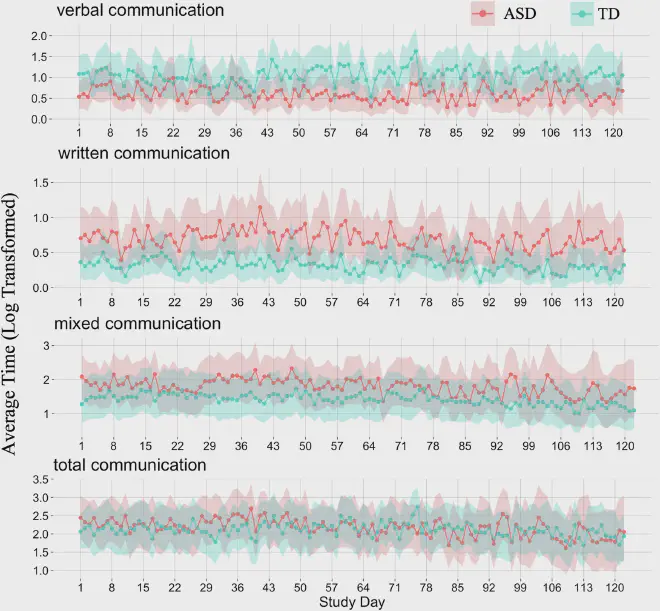Study highlight - Communication patterns in autistic adults
The fact that autistic individuals prefer text-based rather than speech-based forms of communication is often stated by patients or caregivers on the basis of subjective self-reports. In everyday diagnostic practice, however, such behavior is difficult to observe - the environment is far removed from what patients are used to and doctors have little time for clinical observations.
A smartphone-based study approach that can record real behavior over a longer period of time without bias is therefore particularly suitable here. Using software from the ABCD-J ecosystem, a study has now shown that autistic adults communicate more text-based than a neurotypical control group.
For the study, the smartphone use of autistic adults and a control group was passively recorded over 4 months using JTrack Social. Information on which apps were used - transmitted pseudo-anonymized and securely encrypted - was used to draw conclusions about communication preferences.
Communication apps were categorized as verbal (such as phone calls), written (such as SMS or email) or mixed communication (such as WhatsApp, which allows text and voice-based communication). Group comparisons were then drawn up based on the time spent using the apps in individual categories. Although groups of people spent a similar amount of time using communication apps, autistic adults communicated statistically significantly more often using text-based communication - on average 2.3 times longer than neurotypical individuals.

Source: Turna et al., 2025; www.nature.com/articles/s41746-025-01545-x
There's no articles to list here yet.